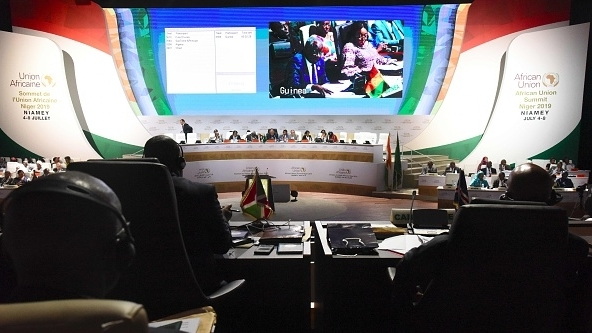
Leaders from across Africa launched the operational phase of the biggest trade area, by members, in the world.
Covering a population of 1.2 billion people, the Continental Free Trade Area (CFTA) aims to boost intra-African trade levels, and eventually create a single continent market spanning from the Red Sea to the Atlantic.
With the formal launch done, the count down to trading under CFTA rules 12 months from now, begins. But between now and July 1st 2020, there is much to be done, with some countries still deeply concerned about potential revenue losses.
“Let’s take it myth by myth. What is the CFTA going to do with tariffs? The CFTA is going to take away six percent of the tariffs, we’re going to do down to zero on 90 percent of the goods over a period of 10 years. Essentially, we’re hoping – and we’ve seen this in many other free trade area agreements is that you create more jobs, you diversify the economy, and that gives you more growth, so you that gives you more Value Added Tax, you get more personal income tax. So, what you lose on the tariff side, you gain on the production and value added side,” United Nations Commission On Africa executive director Dr. Vera Songwe said.
For that problem, the African Export & Import Bank (Afrexim Bank) has offered a solution, a $1 billion facility to cushion countries that may lose out.
“Our board has approved a $ 1 Billion CFTA Fiscal Adjustment facility to support countries that will suffer fiscal revenue losses as a result of the CFTA implementation. We hope that this well help countries to accelerate the ratification of the CFTA,” Afrexim president Benedict Oramah said.
By removing tariffs on 90 percent of goods, and non-tariff barriers, the CFTA aims to boost the proportion of intra-African trade to 60 percent, by 2022.
But most of that trade, especially outside monetary unions, takes place in a third currency.
The Afrexim Bank estimates that currency conversions on billions of transactions cost the continent at least $5 billion a year.
There’s also no escaping the wider context of this trade deal. At a time when the United States has ignited trade disputes with the EU, her North American neighbors and China, and blocked appointments of new judges to the WTO, the CFTA was a reminder that even in a cynical age of narrow self interest, countries can still put common interests, over national ones.
Even as the world’s biggest free trade area takes shape, there are still negotiations left on what goods will be excluded from tariff liberalization lists, what sectors still need shielding – and more.
This leaves policy makers a lot of ground to cover within the 12-month window.


Copyright © 2018 CGTN. Beijing ICP prepared NO.16065310-3
Copyright © 2018 CGTN. Beijing ICP prepared NO.16065310-3